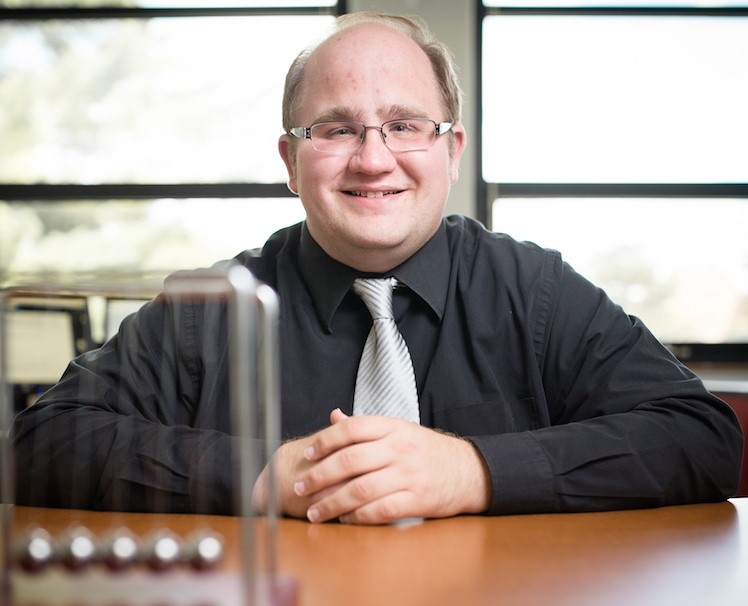How to build meaningful (virtual) classroom relationships
March 1, 2022 - Liz Schondelmayer
For many students, learning remotely has many benefits, especially in the midst of the ongoing COVID-19 pandemic: it allows for less traveling, less risk of exposure, and more opportunities to wear sweatpants all day. But there is a significant downside as well: loneliness and feelings of isolation, especially from peers.
 Dr. Bill Chopik (pictured left) and graduate student Jeewon Oh, social scientists in the Michigan State University Department of Psychology, have implemented a virtual classroom activity called the "fast friends" procedure to address this problem and researched the impact it had on students throughout the semester. Published in the Teaching of Psychology, Chopik and Oh's study found that among students in three undergraduate classes and a graduate course in which the activity was held, almost all felt that it was a positive experience that brought them closer to their classmates.
Dr. Bill Chopik (pictured left) and graduate student Jeewon Oh, social scientists in the Michigan State University Department of Psychology, have implemented a virtual classroom activity called the "fast friends" procedure to address this problem and researched the impact it had on students throughout the semester. Published in the Teaching of Psychology, Chopik and Oh's study found that among students in three undergraduate classes and a graduate course in which the activity was held, almost all felt that it was a positive experience that brought them closer to their classmates.
Developed in the late 1990s by researchers from Stony Brook University, the "fast friends" procedure goes beyond typical ice breakers and encourages people to get to know one another on a much deeper level. It is designed to foster safe spaces where self-disclosure, active listening, and healthy communication are encouraged.
While this procedure itself is not new, Chopik's study is the first to formally collect data on its effectiveness in a remote classroom setting. "While the procedure has seemed to 'work' between strangers in lab studies, we wanted to know if the procedure had the potential to increase student engagement, form bonds between classmates, and illustrate concepts that we’d be learning about in the class," explained Chopik.
"Turns out—it was amazing! Not only did students love it but they felt more positively about the class and it illustrated useful concepts about how relationships form."
The "fast friends'' procedure includes a series of questions that strangers can ask each other, which become progressively more intimate and personal throughout the activity. Questions range from lighthearted (such as "Given the choice of anyone in the world, whom would you want as a dinner guest?") to much more serious (for example, "If you were to die this evening with no opportunity to communicate with another person, what would you most regret not having told someone?"), with the end goal of creating a meaningful mutual bond between people who otherwise may not have connected.
While some students reported feeling uncomfortable with the depth of the questions, each of the 77 students who participated in the study reported that the activity was a positive experience; nearly 99% reported that it made them like their classmates more and 97% said that the felt closer to their peers as a result; and finally, over 91% said it made for a more positive experience in the course overall.
The overall impact of this activity on the students was a pleasant surprise to Chopik: "We didn’t quite realize that doing the activity made the students feel more engaged in the class and more supported by the classmates. We were a bit shocked that the procedure extended to affect how they felt about the class and their peers as a group!"
While Chopik implemented an 80-minute version of this activity in his own classes, the study suggests that even a shorter version of the procedure can reap similar results.
"For other researchers and teachers, we think one take-away is that it gets students talking with one another, engaged in the course, and leaves them with a point of contact in the class other than the instructor for the rest of the semester and maybe beyond," Chopik said. "These findings alone might be reason enough to incorporate it into courses or lab meetings."
Learn more about Chopik's research here.


